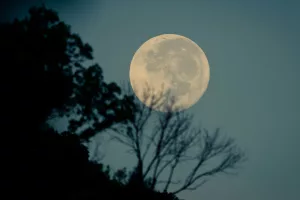The gravitational pull exerted by celestial bodies, primarily the Moon and the Sun, lies at the core of the mesmerizing dance of ocean tides. This gravitational force induces a phenomenon known as tidal forces, causing ocean water to bulge in response to varying gravitational strengths. As the Earth rotates on its axis, the gravitational pull from the Moon and the Sun creates two high tides and two low tides roughly every 24 hours and 50 minutes. This recurrent tidal pattern depends heavily on the position of the Moon relative to the Earth, with the gravitational attraction varying based on the distance between these two bodies.
The Role of the Moon in Tidal Formation
The Moon’s gravitational force is the primary driver of ocean tides due to its proximity to Earth. The gravitational pull of the Moon attracts water on the Earth’s side facing the Moon, causing a bulge that results in a high tide. Simultaneously, there is another high tide on the opposite side of the Earth, known as the opposite bulge, created by the centrifugal force resulting from the Earth-Moon system’s rotation.
- Understanding the Dual Bulge System: This gravitational pull from the Moon not only causes the water to bulge on the side facing the Moon but also creates a similar bulge on the opposite side due to the centrifugal force generated by the Earth-Moon system’s rotation. This dynamic equilibrium results in two high tides and two low tides occurring every day, as the Earth completes a full rotation while the Moon orbits around it, tugging at the oceans with its gravitational force.
- Practical Insights: If you’re planning to visit a coastal area, checking the local tide schedule can enhance your experience. For instance, some beaches reveal fascinating tide pools during low tide, perfect for exploring marine life up close.
- Case Study: Coastal Tides: Consider the Bay of Fundy in eastern Canada, renowned for having the highest tides in the world. The unique shape of the bay amplifies the tidal effects, showcasing the Moon’s significant influence on local tidal phenomena. Here, the difference between high and low tide can reach up to 16 meters (about 52 feet), offering a dramatic demonstration of tidal forces at work.
The Influence of the Sun on Tidal Patterns
While the Moon plays a dominant role in tidal formation, the Sun also contributes significantly to the complex interplay of forces governing ocean tides. When the Sun, Moon, and Earth align during a full or new moon, the gravitational forces from both the Sun and the Moon combine, leading to higher high tides and lower low tides, known as spring tides. This alignment results in the highest high tides and the lowest low tides, creating more dramatic tidal fluctuations.
- Spring and Neap Tides: During the Moon’s first and third quarters, when the Sun and Moon form a right angle relative to Earth, the gravitational forces partially cancel each other out, resulting in lower high tides and higher low tides, known as neap tides. Neap tides exhibit less extreme tidal variations compared to spring tides due to the opposing gravitational forces at play.
- Practical Example: Coastal engineers often consider spring and neap tides when planning constructions like docks and seawalls, ensuring that these structures accommodate the full range of tidal movements. For instance, a harbor in a region prone to significant tidal variations needs to be designed with the highest spring tide in mind to avoid flooding.
- Historical Context: The understanding of spring and neap tides has been crucial for naval history. Historical navigation charts often included tidal information, helping sailors avoid hazardous conditions.
Local Factors Influencing Tidal Variations
Celestial mechanics form the foundation of tidal patterns, but local geographic and oceanographic factors can introduce variations in tide heights and times. Factors such as coastal topography, underwater structures, and ocean currents can amplify or dampen the effects of tidal forces, leading to unique tidal patterns in different regions.
- Impact of Coastal Topography: The shape of the coastline, depth of the seabed, and presence of underwater barriers can all influence the amplitude and timing of tides in a particular area. For instance, narrow bays and inlets can experience exaggerated tidal ranges due to the funneling effect of water being pushed into a confined space.
- Real-World Example: In places like the Cook Inlet in Alaska, the narrow configuration of the inlet leads to large tidal ranges, making it one of the most challenging areas for navigation.
- Interaction with Ocean Currents: Ocean currents can also interact with tidal flows, either enhancing or counteracting the effects of gravitational forces from celestial bodies. The Gulf Stream, for example, can modify tidal patterns along the eastern coast of the United States, affecting everything from local fishing practices to large-scale shipping routes.
- Case Study: The English Channel: The interaction between the North Atlantic Ocean and the English Channel’s unique topography leads to significant tidal variations, affecting navigation and marine operations. Mariners in this region rely heavily on tidal predictions for safe passage.
The Science of Predicting Tides
Understanding and predicting tides require a blend of astronomical calculations and local observations. Scientists use mathematical models to forecast tidal movements, incorporating data from satellites and tide gauges. These models consider the gravitational effects of the Moon and Sun and local factors like wind patterns and atmospheric pressure.
- Tools and Technology: Tide prediction software and apps have become invaluable tools for coastal communities, fishermen, and shipping industries. These technologies offer real-time data and forecasts, helping to plan activities around tidal schedules.
- User-Friendly Applications: Apps like Tides Near Me provide accessible tidal information for everyday users, making it easier for beachgoers to plan their visits and for boaters to ensure safe docking.
- Challenges in Tide Prediction: While technology has advanced, predicting exact tidal heights can be challenging due to unpredictable factors like weather conditions and human activities that alter coastal environments. For example, strong winds and atmospheric pressure changes can lead to storm surges, temporarily altering expected tidal levels.
- Adaptive Strategies: To counter these challenges, coastal planners often use real-time data assimilation, updating models with the latest observed conditions to improve accuracy.
Practical Implications of Tidal Movements
Tides play a crucial role in various economic and environmental aspects, impacting coastal communities, maritime industries, and ecosystems.
- Coastal Infrastructure: Understanding tidal patterns is vital for designing and maintaining infrastructure like harbors, bridges, and coastal defenses. Engineers must account for the highest possible tides to prevent flooding and structural damage. For example, the Thames Barrier in London is a key piece of infrastructure designed to protect the city from tidal surges.
- Marine and Fishing Industries: Tidal knowledge is essential for navigation and fishing. Fishermen often plan their activities around tides to maximize catch efficiency, while shipping companies use tidal information to ensure safe passage through shallow waters. Tides can influence the availability of certain fish species, making timing crucial for successful fishing trips.
- Environmental Impact: Tides influence coastal ecosystems, affecting nutrient distribution, sediment transport, and habitat availability for marine life. Managing tidal impacts is crucial for conservation efforts and sustainable coastal development. Salt marshes and estuaries, for example, are dynamic environments that rely on regular tidal flooding to sustain their rich biodiversity.
- Conservation Efforts: Organizations working to protect coastal habitats often monitor tidal patterns to ensure that conservation measures align with natural cycles.
Future Directions in Tidal Research
As climate change and sea-level rise pose new challenges, understanding tides becomes even more critical. Researchers are exploring innovative solutions to harness tidal energy and mitigate the impacts of rising sea levels on coastal areas.
- Tidal Energy Potential: Tidal energy offers a renewable source of power, with projects underway in regions with high tidal ranges. By converting tidal movements into electricity, communities can reduce reliance on fossil fuels. The MeyGen project in Scotland, for instance, is one of the largest tidal energy projects, demonstrating the potential of this renewable resource.
- Sustainable Development: Integrating tidal energy into the grid requires careful planning to balance environmental impacts with energy needs.
- Adapting to Sea-Level Rise: Coastal planners are developing strategies to adapt to changing tidal patterns, incorporating sea-level rise projections into urban planning and disaster preparedness. Techniques such as managed retreat and the construction of living shorelines are gaining traction as viable options.
- Case Study: The Netherlands: Known for its advanced water management, the Netherlands has implemented innovative solutions like tidal barriers and adaptive infrastructure to protect against rising tides and storm surges. The Delta Works, a series of dams, sluices, locks, and barriers, exemplifies the country’s proactive approach to managing water in the face of climate change.
By delving into the interplay between local factors and astronomical forces, scientists can create more accurate models to predict tidal behavior and its impact on coastal communities and ecosystems. The intricate relationship between celestial mechanics and local geography underscores the complexity of tidal dynamics and the importance of considering both global and regional factors in understanding and predicting tidal variations. Through ongoing research and technological advancements, we can better prepare for and adapt to the ever-changing dance of the ocean tides.
Community Engagement and Education
Understanding tides isn’t just for scientists and engineers; it’s a valuable skill for anyone living or working near the coast. Educational programs and community outreach can increase awareness and preparedness.
- Educational Initiatives: Schools in coastal areas often include lessons on tides in their curriculum, helping students understand the natural forces that shape their local environment. Interactive models and field trips to observe tides can make learning engaging and memorable.
- Community Workshops: Local governments and environmental groups frequently host workshops to educate residents about tidal patterns, potential flood risks, and how to prepare for extreme events. These sessions often include practical advice on creating emergency kits and evacuation plans.
Personal Experiences and Stories
Hearing firsthand accounts of how tides impact daily life can bring a human element to the scientific discussion.
- Local Fisherman’s Tale: Imagine a fisherman from a small coastal town who has spent decades perfecting his craft, timing his outings to coincide with the tides he knows so well. His stories of navigating the waters during peak tides offer insights into the practical challenges and rewards of living in harmony with the sea.
- Tourist’s Perspective: A visitor catching their first glimpse of a dramatic tidal change, such as at Mont Saint-Michel in France, where the tides transform the landscape from a rocky island fortress to a coastal masterpiece, can be a profound experience, highlighting the power and beauty of nature.
By expanding our understanding of tides through education, storytelling, and innovative research, we can not only appreciate the natural world more fully but also ensure that our interactions with it are sustainable and respectful. Whether you’re a seasoned sailor, a curious student, or simply someone who loves a beachside stroll, the tides offer endless possibilities for exploration and learning.



